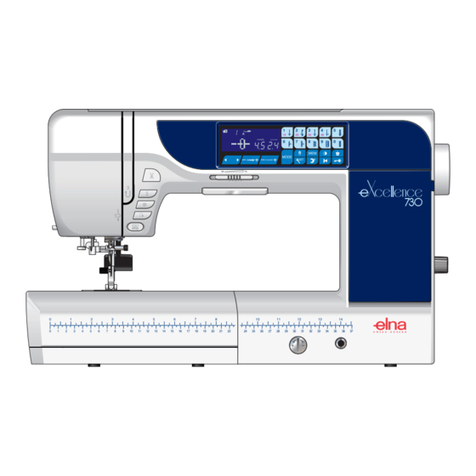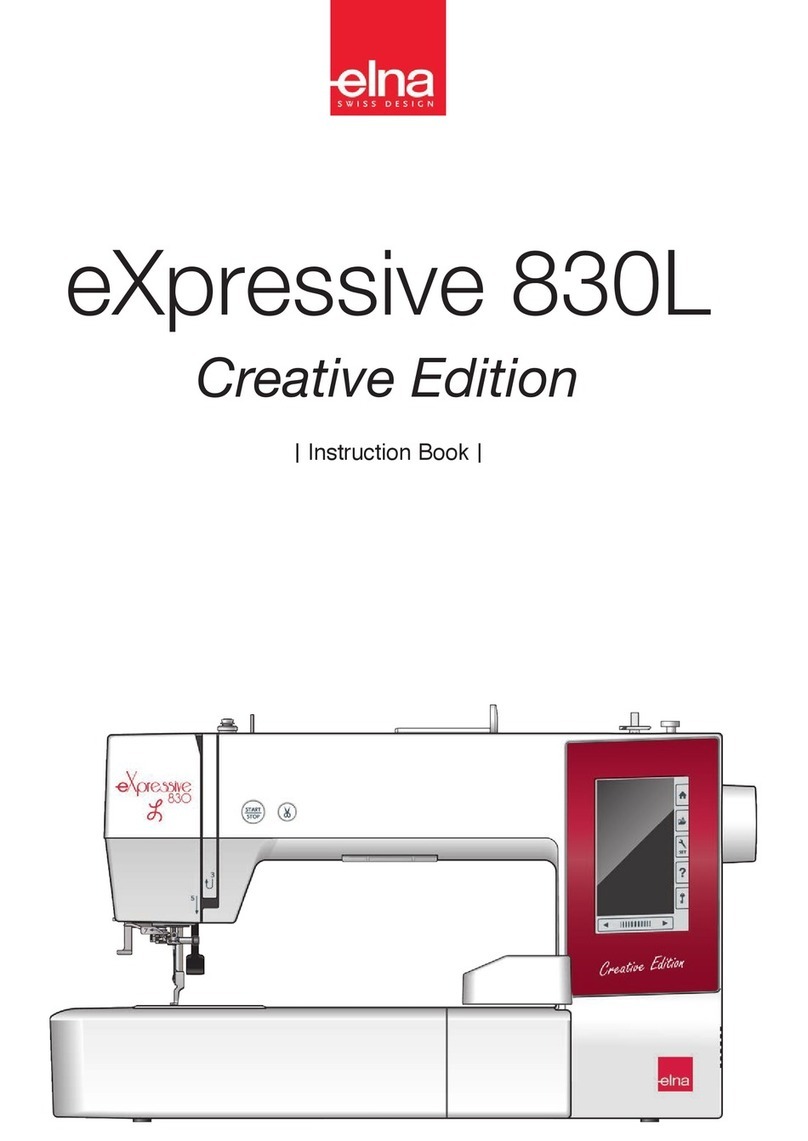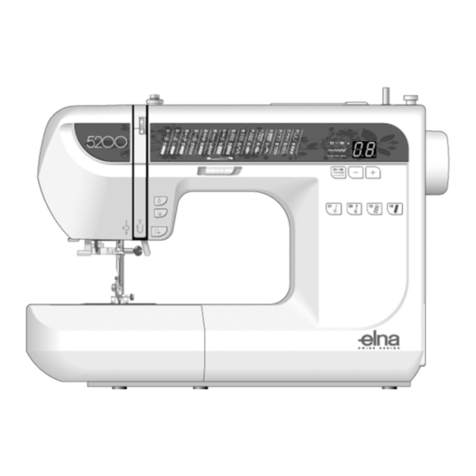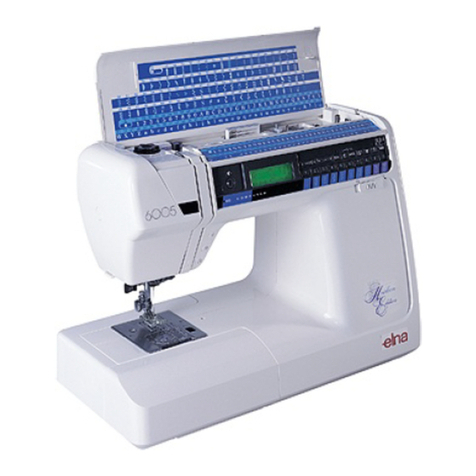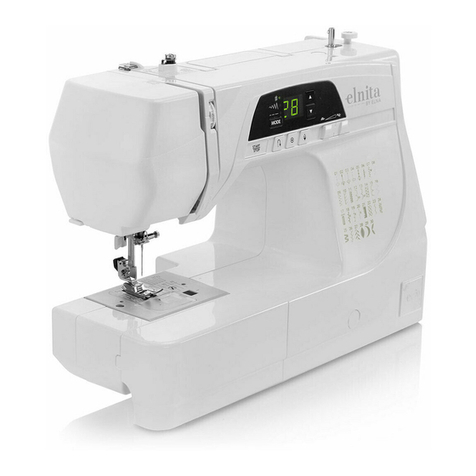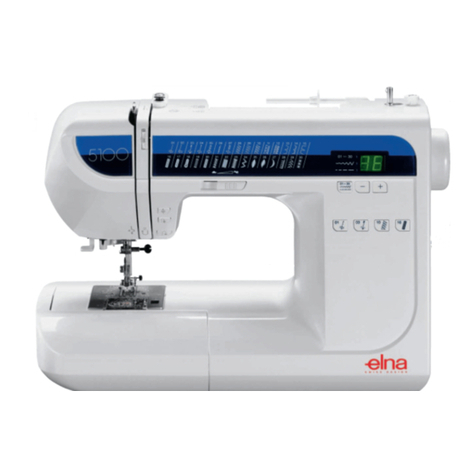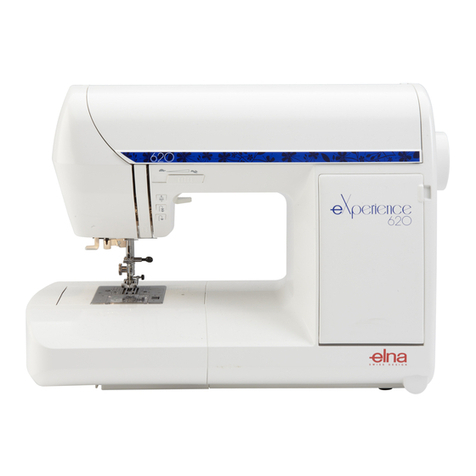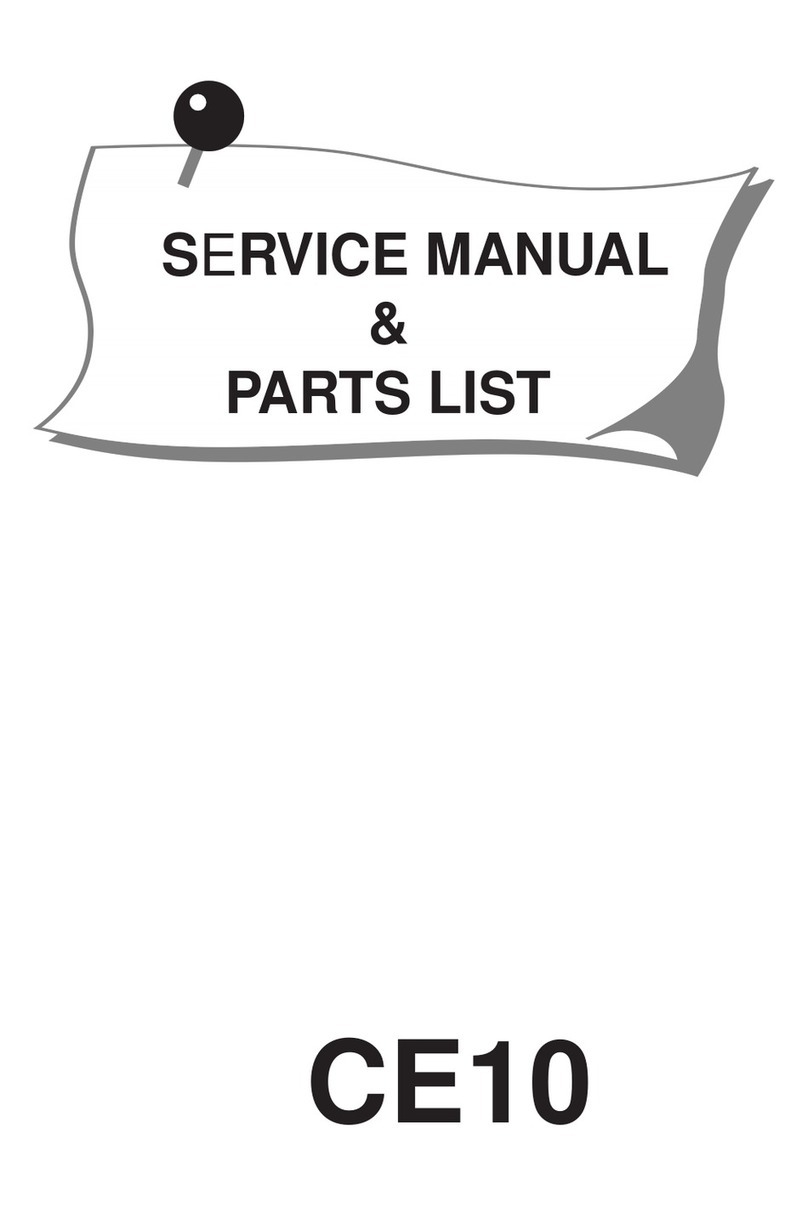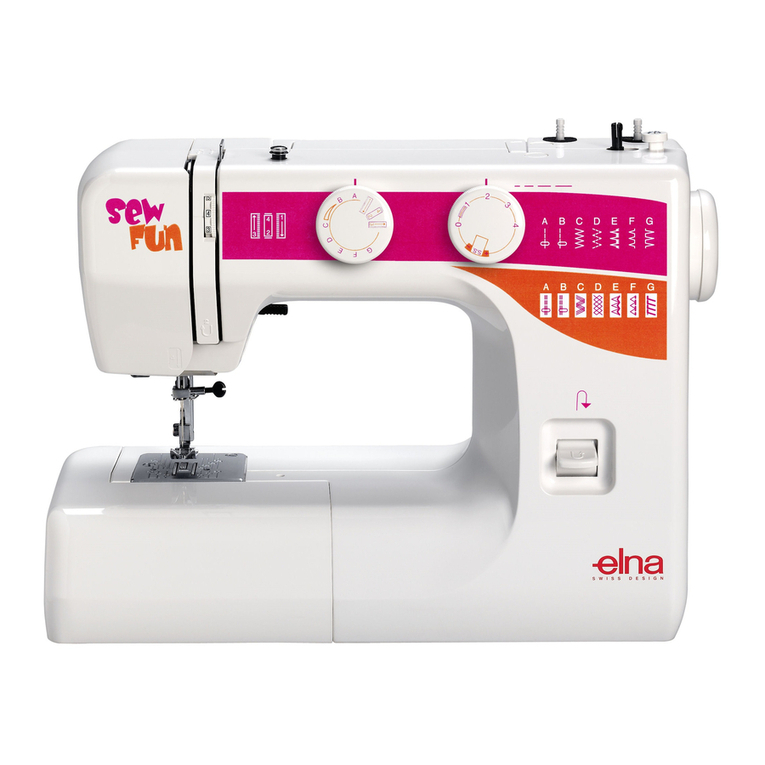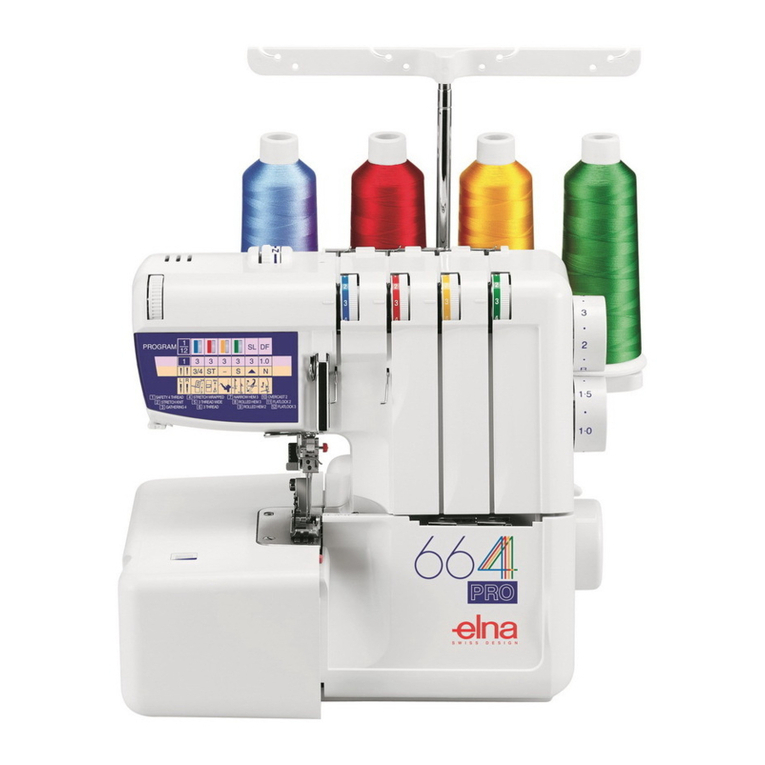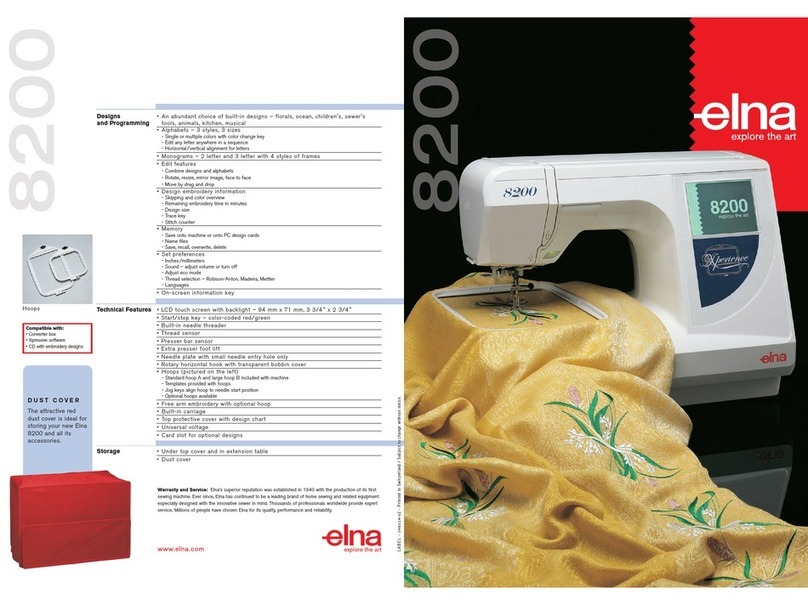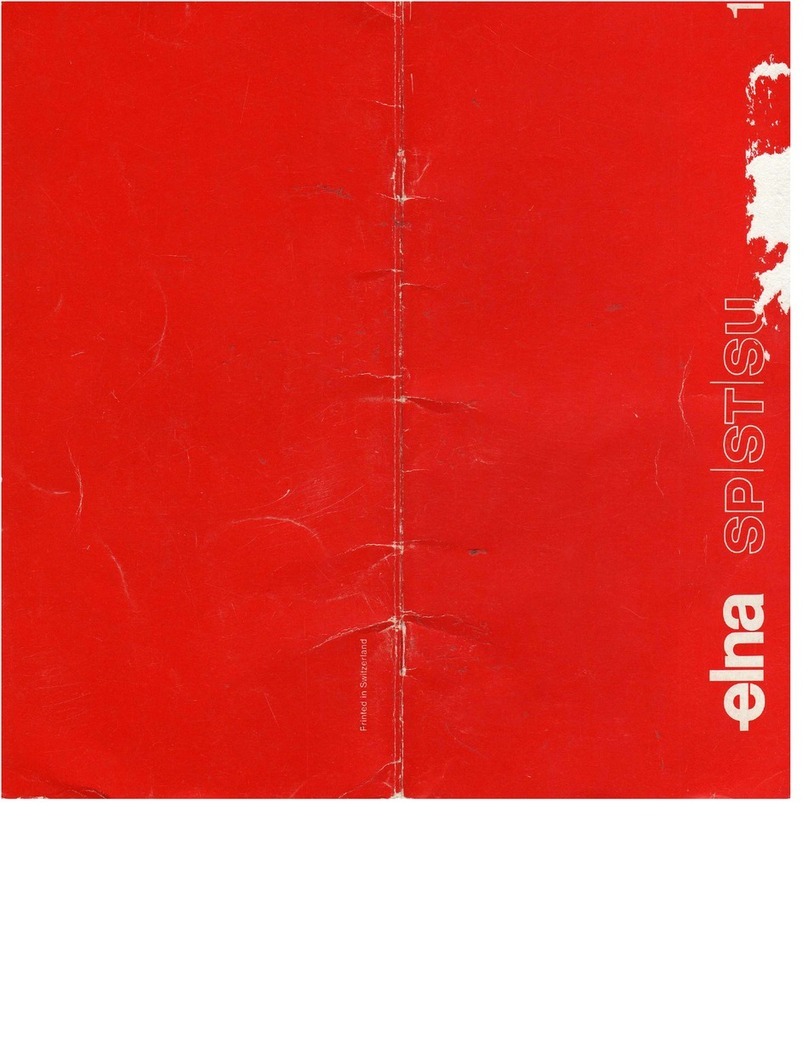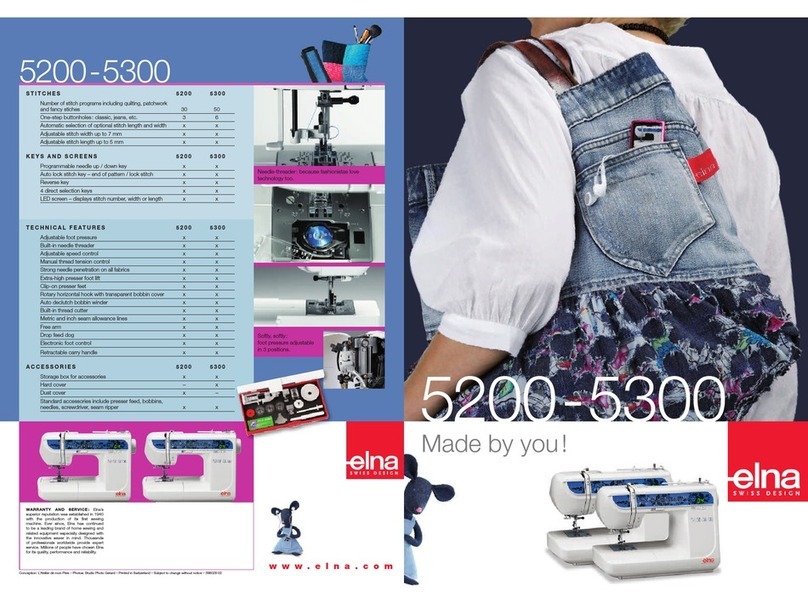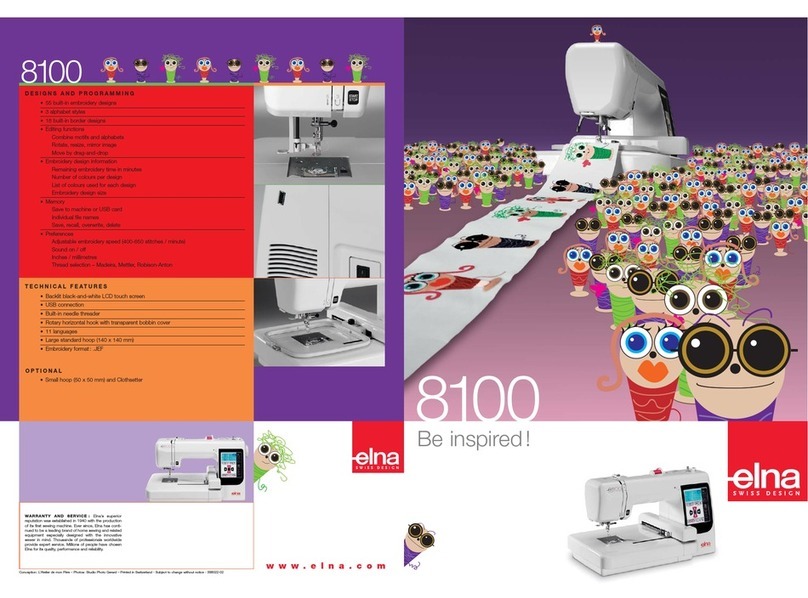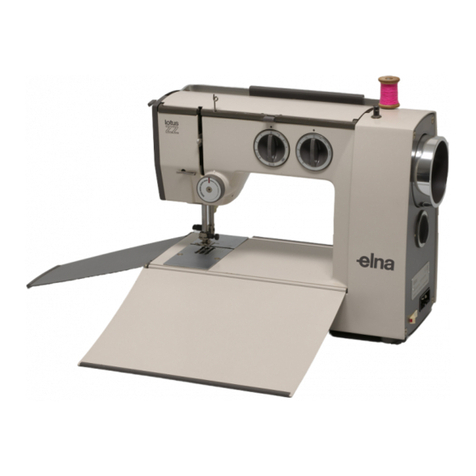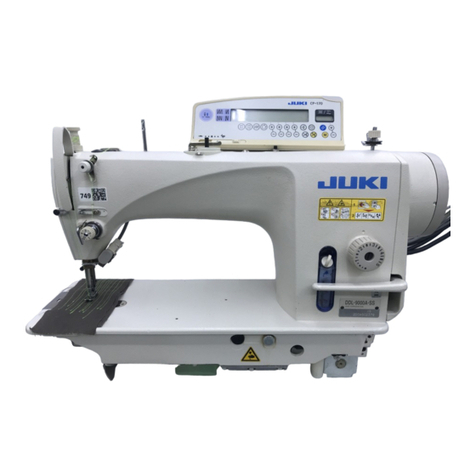
TABLE OF CONTENTS
SECTION I – Machine Parts and Functions
Part Names ............................................................ 3
Standard Accessories ............................................ 3
Extension Table (Accessory Storage Box)
and Free Arm .................................................... 4
Centimeter/Inch Measurements .......... ...................4
Circular Sewing Pivot Points................................... 4
Foot Pressure Dial ................................................. 4
Additional Presser Foot Clearance ........................ 5
How to Snap Presser Foot Off and On .................. 5
How to Remove and Attach the Shank .................. 5
Seam Allowance Lines ........................................... 6
How to Drop the Feed Dog .................................... 6
Stitch Selection Knob ............................................. 6
Stitch Length Knob ................................................. 7
Fine Tuning Stretch Stitches .................................. 7
Stitch Width/Needle Position Dial .......................... 7
Reverse Stitch Lever .............................................. 7
Thread Tension Dial ............................................... 8
SECTION II – Getting Ready to Sew
Selecting the Correct Needle and Thread .............. 9
Changing the Needle ............................................. 9
Needle Definitions ................................................ 10
Connecting the Machine to Power Supply ........... 11
Foot Control and Sewing Speed .......................... 12
Removing the Bobbin Case ................................. 12
Spool Pins ............................................................ 12
Winding a Bobbin ................................................. 13
Inserting the Bobbin ............................................. 14
Threading the Machine ........................................ 15
Drawing Up the Bobbin Thread ............................ 16
SECTION III – Sewing Basics
Example of How to Read the Machine Set-Up
Information ..................................................... 17
Which Presser Foot To Use ................................. 17
Straight Stitch ....................................................... 18
Starting to Sew ..................................................... 18
Finishing Off a Seam............................................ 18
Changing Sewing Direction .................................. 18
Gathering ............................................................. 19
Zipper Insertion ............................................... 20-21
Pintucks................................................................ 22
Twin Needle Hem (Optional needle) .................... 23
Zigzag Stitch ........................................................... 23
Overcasting ............................................................. 23
Whip and Roll Hem ................................................. 24
Satin Stitch Applique ............................................... 24
3-Step Zigzag .......................................................... 25
Mending a Tear .................................................. 25
Stretch Blind Hem or Woven Blind Hem ................. 26
Shell Tuck................................................................ 27
Box Stitch ................................................................ 27
Picot Stitch .............................................................. 28
Automatic Buttonhole (Model 2300 only) ........... 29-30
4-Step Buttonhole (Model 2100 only) ...................... 31
Corded Buttonhole .................................................. 32
How to Sew on a Button ......................................... 33
SECTION IV – Stretch Stitches
Triple Seam ............................................................. 34
Decorative Stretch Stitches ..................................... 34
Smocking ................................................................ 35
Super Stretch Stitch ................................................ 36
Double Overlock Stitch ........................................... 36
SECTION V – Satin Stitches
Scallop Edges ......................................................... 37
SECTION VI – Taking Care of Your Machine
Cleaning the Bobbin Case and Hook ...................... 38
Cleaning the Feed Dog ........................................... 39
Oiling ....................................................................... 39
Changing the Light Bulb .......................................... 39
TROUBLESHOOTING........................ 40
INDEX ................................................. 41
NOTE: Information found in this instruction
manual is current at the time of printing. Elna
reserves the right to change and update specifi-
cations and information as needed.
2
